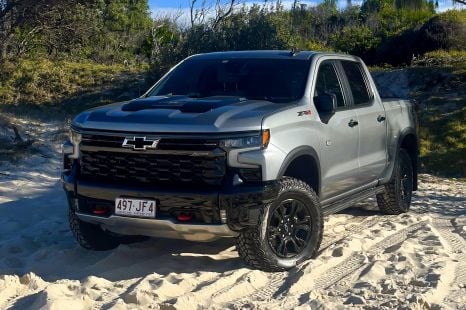

William Stopford
2025 Chevrolet Silverado ZR2 review
1 Month Ago
The second-generation Amarok has been a long time coming, and it's way more than just a re-skinned Ford Ranger.
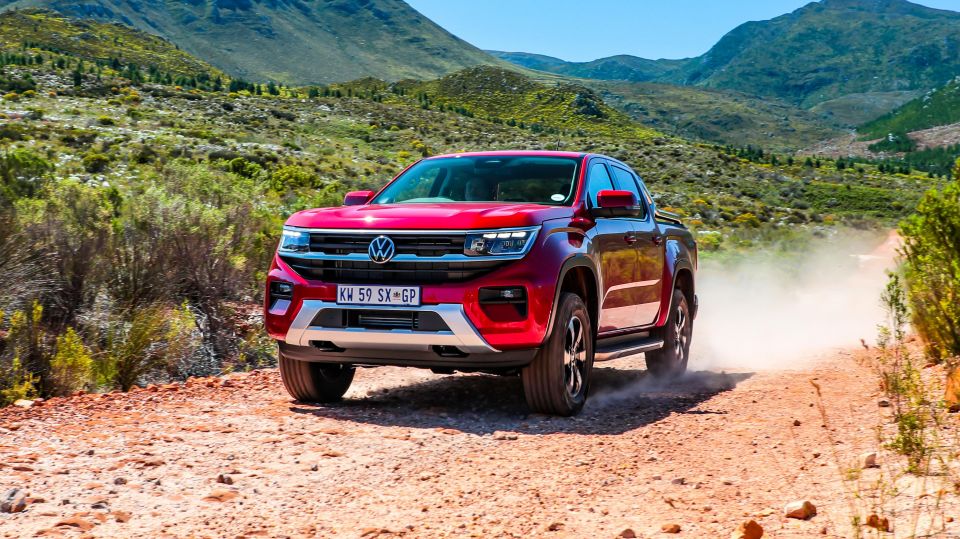


Quickly see how this car stacks up against its competition. Select any benchmark to see more details.
Where expert car reviews meet expert car buying – CarExpert gives you trusted advice, personalised service and real savings on your next new car.
As one of Volkswagen’s most popular models in Australia, the Amarok has long been a solid performer not only for VW, but in the dual-cab ute segment in general.
More recently it has cemented its place as the performance ute of choice, being the only V6 diesel dual-cab available.
But, despite its performance prowess, it was really starting to show its age with a dated interior, very dated safety specifications and a lack of refinement found on the modern crop of dual-cab Utes.
That’s all about to change, though. By now you’ll probably be aware that the Amarok shares a platform with the latest Ford Ranger and in addition to that, Volkswagen has had sizeable involvement in the development program from the very outset.
Volkswagen even stationed a group of over 20 engineers in Australia alongside the local Ranger team to design and engineer the Amarok to suit Volkswagen’s tastes.
We’ve now driven a stack of new Rangers and have a good hold of why it’s now the best dual-cab ute in the country. The only question now is to see whether the work done to Amarok is enough to position it as the premium offering in the segment.
Our review will primarily focus on the PanAmericana and Aventura models, which sit at the top of the Amarok range.

Volkswagen hasn’t announced local pricing yet for the Amarok, but we’re expecting it to be positioned as a premium product given the high specification, as well as its strong links to the Ranger.
Volkswagen appears to be throwing the feature book at the premium models and offering a greater mix of standard equipment at the lower end. It’ll likely result in a commensurate asking price.
The brand has progressively been building up the cost of the Amarok with special editions, the most recent example of which is the Amarok W580SE, priced from $86,990 before on-roads.
For reference, the Ford Ranger starts at $36,180 plus on-road costs in its most affordable guise, climbing to $76,990 for the Platinum V6. The twin-turbo V6 Raptor is more again, at $86,790.
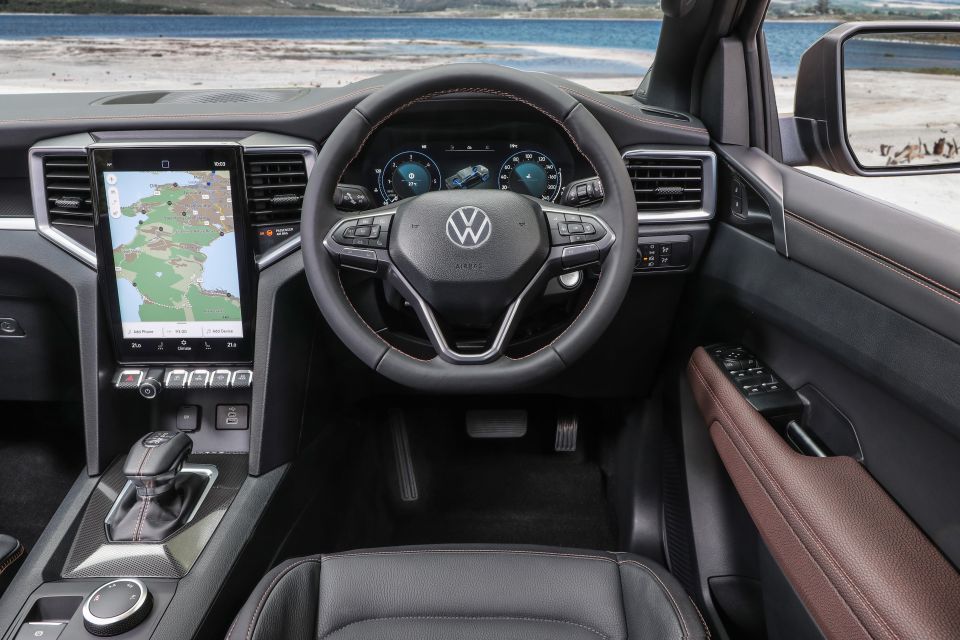
Buy your new car without the stress. It's fast, simple and completely free.

Great service from Travis and team, second time I have used this business would not hesitate to recommend them to anyone
Craig C.
Purchased a Ford Ranger in Sunshine Coast, QLD
CarExpert helped Craig save $7,224 on his Ford Ranger, now let us save you on your next new car.
Get your BEST priceTo ensure Volkswagen’s design team wasn’t influenced by what Ford was doing and vice versa, Volkswagen’s design team operated independently to Ford. Volkswagen’s designers didn’t know what Ford was doing and Ford didn’t know what Volkswagen was doing.
So as a result of that you’ll see a number of elements to the interior that are common (it’s a requirement of some hardware to be consistent between the vehicles), but others that are unique to Volkswagen.
As an example, the dashboard on PanAmericana and Aventura are leather wrapped and soft to the touch, that finish follows to the top of the doors as well to continue that premium feel.
Central to the cabin on Style, PanAmericana and Aventura trims is a 12-inch vertical infotainment system that features a unique Volkswagen skin with Ford’s Sync 4 infotainment running the back end.
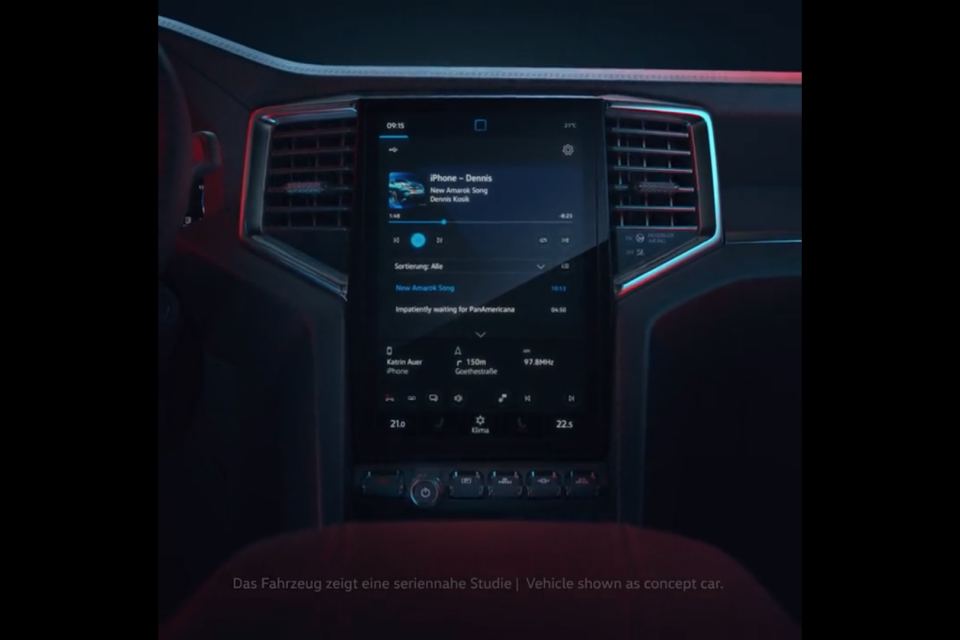
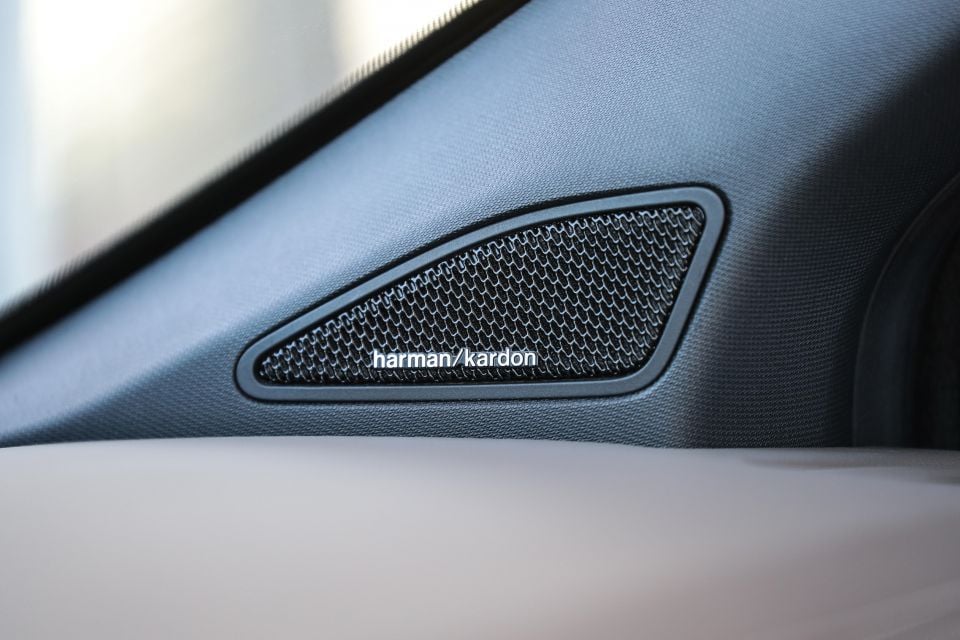
That means the capability of over-the-air updates, wireless Apple CarPlay and Android Auto, along with AM/FM and DAB+ digital radio. The sound system on PanAmericana and Aventura trims is a harman/kardon-branded system. It features a subwoofer and amplifier located behind the backrest in the second row.
We had a brief listen and the sound system sounds as good, if not better than the JBL sound system in the Toyota HiLux, which sets a benchmark in the segment for audio quality in a dual-cab ute.
The rest of the sound system is easy enough to use and it features the ability to recognise voice commands that can either be processed by the native infotainment system or forwarded through to your smartphone’s voice cloud-based voice recognition system.
We did find the system a little laggy when opening menus shortly after starting. Once they were cached it would operate quicker.
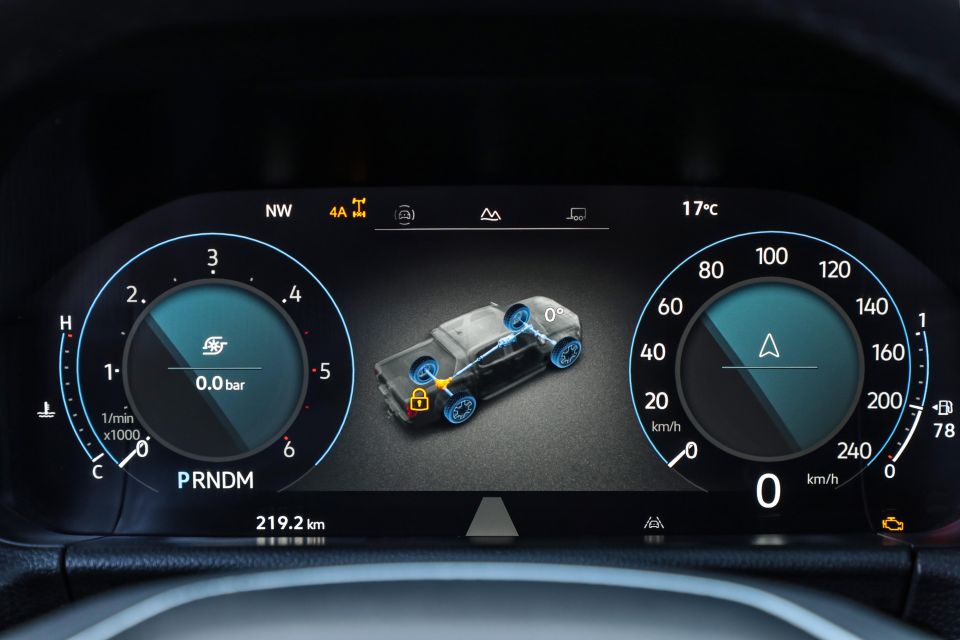
Volkswagen’s ergonomics team selected the foam material used within the seats to try and match the benchmark seat comfort and feel of the previous-generation Amarok.
We spent a lot of time in the cars at the launch and found the seats to be pretty comfortable. Disappointingly while the seats are perforated in some trims, there isn’t an option for seat ventilation (just heating on some grades).
Standard also on the mid-spec Style grades and above is a 12-inch digital cockpit display that offers customisable segments left and right of the central section to suit what the driver is wanting to appear on screen.
Off-road drivers will love the off-road display that offers pitch and roll angles, along with torque distribution. There’s even a towing menu that gives you critical towing data in collaboration with the integrated tow bar and brake controller, both of which are standard across the range.
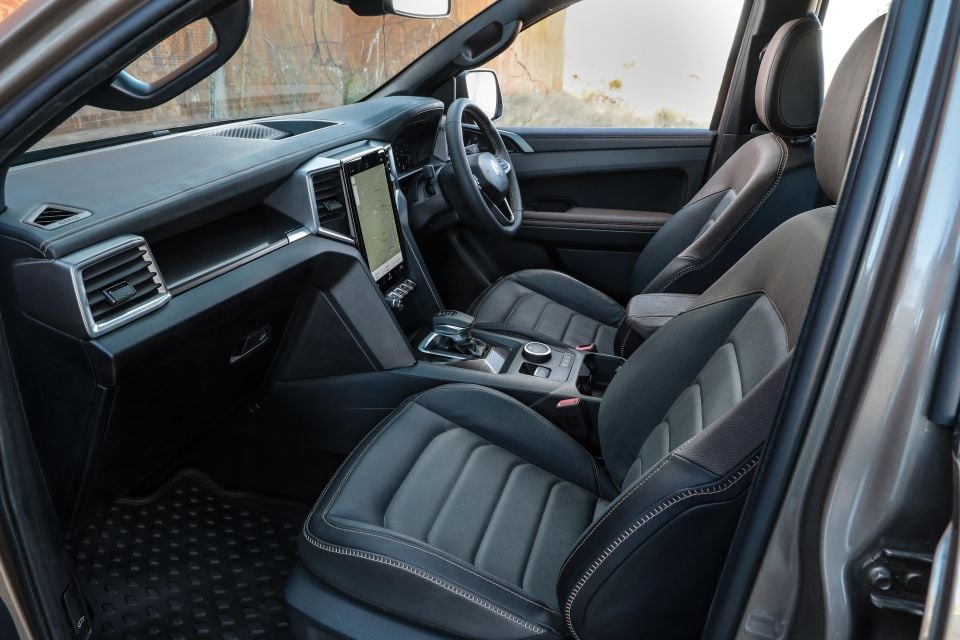
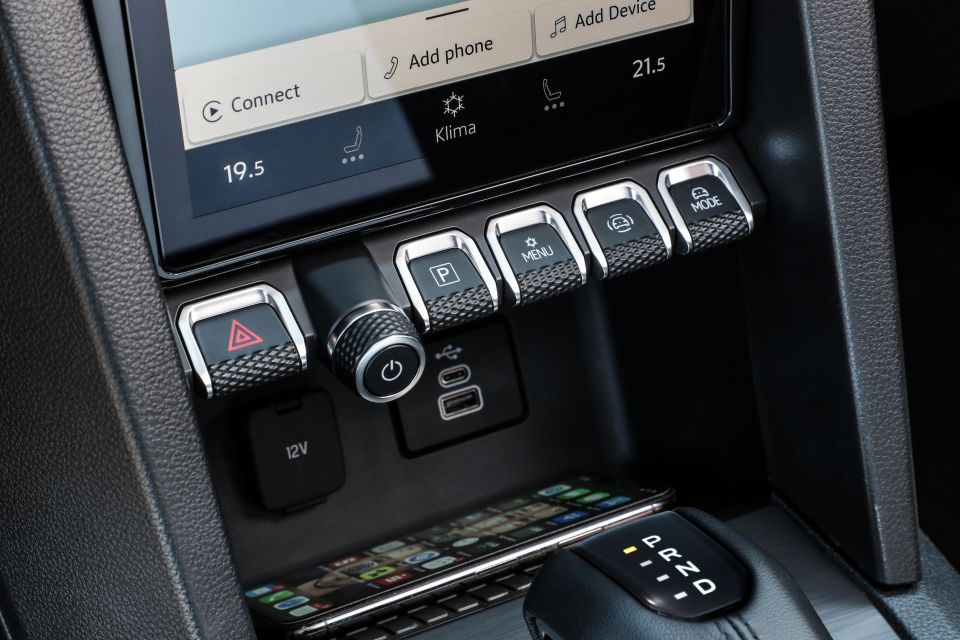
Fit and finish, along with build quality appears to be pretty good. We did notice the rear air vent housing to be a little loose when pulled while moving the air vents in the second row. Outside of that, everything felt above board and what you’d expect from a premium dual-cab ute.
Storage space is good with two cup holders in the centre console, a slot for wireless phone charging, along with USB-C, 12V and USB-A connectivity. There’s also an additional USB-A port adjacent to the AEB equipment for the installation of a dash camera.
Two glove boxes come standard across the range, but the interior misses out on the cup holders beneath the air vents found on Toyota HiLux, Isuzu D-Max and some Ranger specifications.
Thankfully the steering wheel doesn’t use the haptic touch elements we’ve seen in some Volkswagen products. Instead it uses physical buttons with a slight flat bottom profile. It was strange to see a number of blank buttons on the wheel, even on the top-spec Aventura – perhaps they’re reserved for future features.
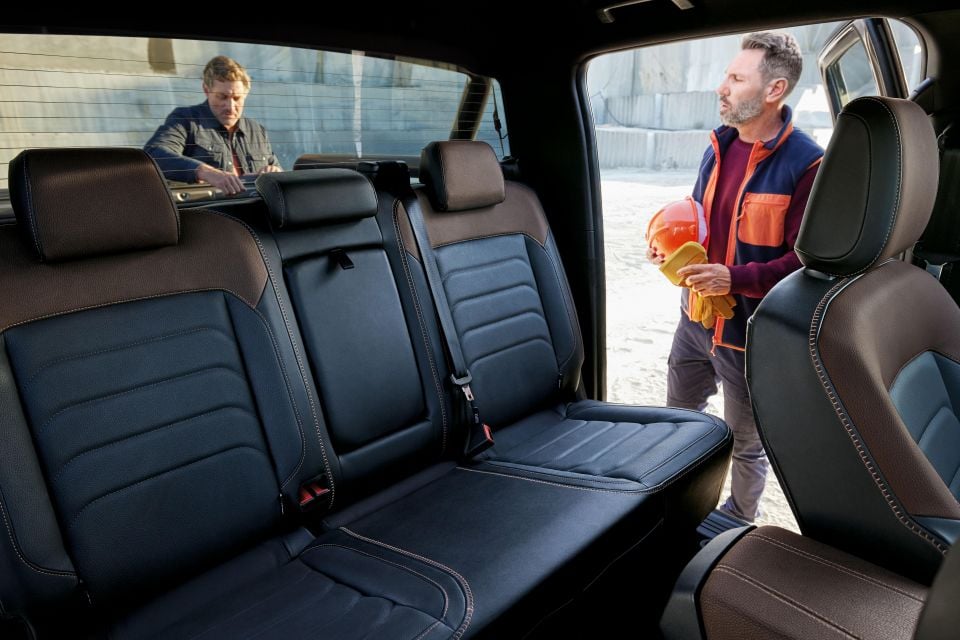

Moving to the second row, there’s now finally room for adults. The previous-generation Amarok had plenty of width to accommodate burly adults, but knee and leg room was very cramped.
Thanks to the Ranger’s increased wheelbase, you can now comfortably accommodate a tall adult in the second row behind the tall driver or front passenger.There’s also ample toe and head room.
While there are no USB outlets for charging devices, you will find a 230V power outlet (150W), along with a 12V outlet. There are also air vents, along with a centre armrest with two cup holders.
The second row’s seat base lifts to reveal a small storage area, along with a storage nook for the jack and other emergency safety equipment. The rear seats offer ISOFIX anchors on the outboard positions, along with two top-tether points. There’s no room to store items behind the seat back in the second row.
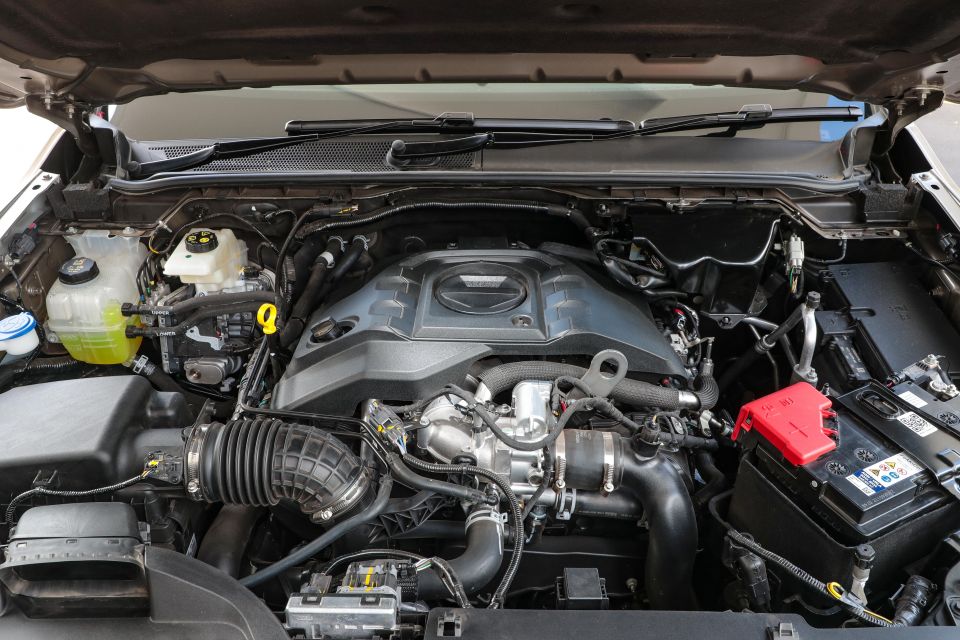
Australia’s line up will initially kick off with three of the five variants, before the final two arrive mid-year.
Arriving first will be the Amarok Style (formerly known as the Highline), the PanAmericana (formerly the Canyon) and finally, the Aventura.
All three variants will be available with a 3.0-litre V6 turbo-diesel shared with the Ford Ranger; optional on the Style, and standard on both the PanAmericana and Aventura.
The Style will come standard with a 2.0-litre bi-turbo four-cylinder diesel, also shared with the Ford Ranger.

The Aventura will also offer a 2.3-litre four-cylinder turbocharged petrol engine as an option. This engine is unique to the Amarok and isn’t available with the Ranger locally; and is based on the same motor used in the likes of the Ford Focus ST hot hatch and Mustang High Performance pony car.
All three launch engines are mated to a 10-speed automatic transmission, with the V6 diesel and four-cylinder petrol driven through a permanent all-wheel drive system.
Later in the year, the Style, PanAmericana and Aventura will be joined by the base ‘Amarok’ (previously known as the Core) and the Life (previously known as Sportline). The entry-level Amarok will come with a 2.0-litre single-turbo four-cylinder diesel mated to either a six-speed manual or six-speed automatic transmission.
The Life will come exclusively with the 2.0-litre bi-turbo diesel mated to a 10-speed automatic.

2.0-litre 4cyl turbo-diesel (Amarok)
2.0-litre 4cyl bi-turbo diesel (Life, Style)
3.0-litre V6 turbo-diesel (Style, PanAmericana, Aventura)
2.3-litre 4cyl turbo petrol (Aventura)
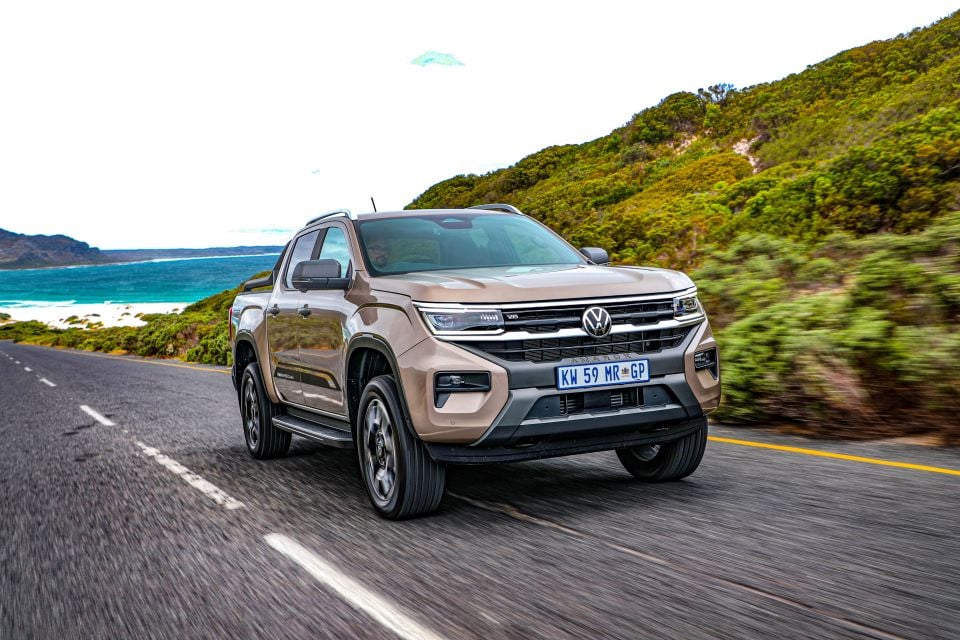
We were hoping to drive all Amarok variants coming to Australia, but unfortunately we could only get behind the wheel of 3.0-litre V6 variants on-road and the 2.0-litre bi-turbo four-cylinder off-road.
We’ll have to reserve judgement on the petrol variant and the entry-level diesel once we get our hands on vehicles in Australia.
Our first drive was in the top-specification Aventura with the 3.0-litre V6 diesel. On startup it’s quieter and sounds more refined than the outgoing Amarok V6, and also unlike the outgoing Amarok it’s started using a push-button start located just next to the steering wheel.
It’s also worth pointing out; while Euro 6 versions of the Amarok will require AdBlue, Australian-delivered vehicles don’t require any AdBlue additive to operate.
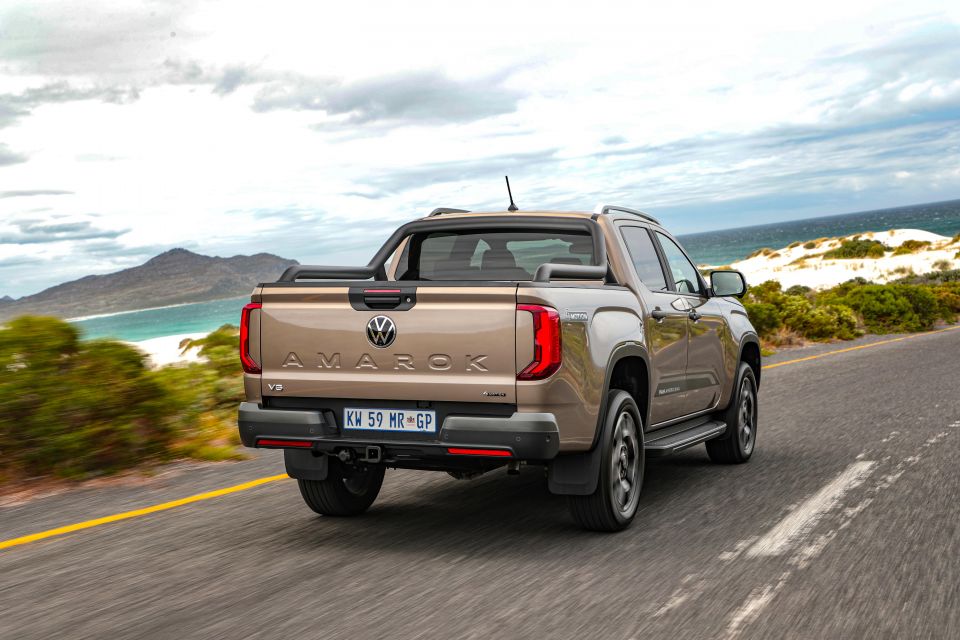
Setting off the diesel is smooth and torque delivery is linear. The 10-speed automatic transmission does an excellent job of rifling through gears and is always happy to lean on the engine’s torque band as required. You rarely catch it napping and it’s eager to please with 600Nm on tap.
Volkswagen played a pivotal role in ride and handling tuning for Amarok, creating a bespoke suspension and steering tune for its range of vehicles (compared to the Ranger).
According to Volkswagen, the (base) Amarok, Life and Style share the same suspension and steering tune, while the PanAmericana and Aventura variants offer a slight variation; a firmer ride for the Aventura (along with a faster rack) and a firmer (than standard models), but softer (than Aventura) ride for the PanAmericana.
It wasn’t clear whether the ride changes were simply a tune of the same hardware, or whether the PanAmericana and Aventura were using a different set of suspension hardware.
But, the differences were certainly noticeable. The Aventura’s ride and handling tune feels far more like the previous-generation Amarok than the PanAmericana.
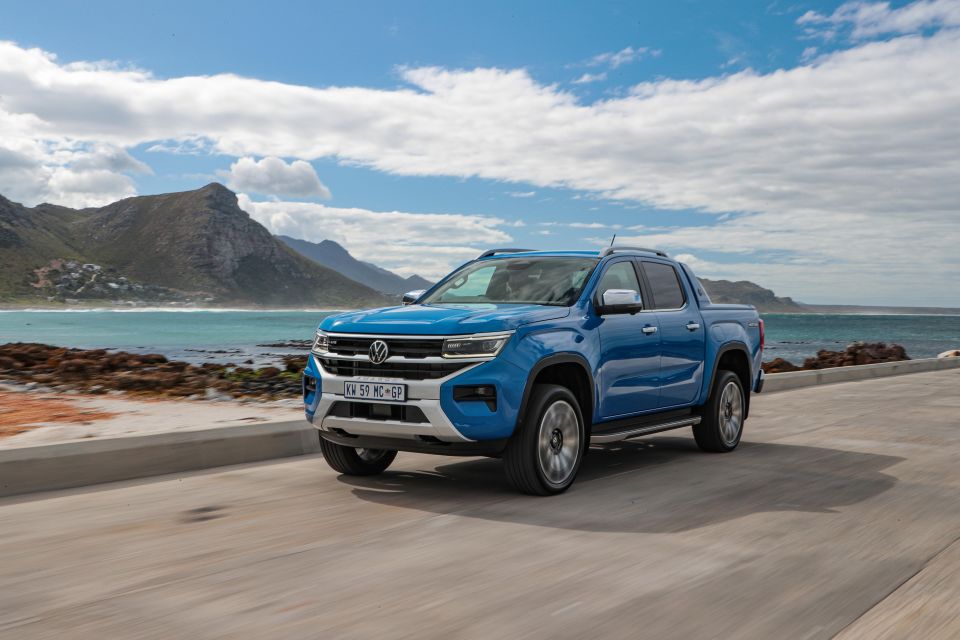
It rides on 21-inch alloy wheels with a road-focussed tyre. The ride can be busy over imperfect stretches of road and the roads were all pretty good in and around our drive routes in South Africa.
That extends to handling too – on faster and slower stretches of road you could really push the ute through a corner and lean on the throttle out of the exit without it pushing to understeer.
It was actually a really engaging to drive, and certainly felt significantly sharper than the Ranger; which is let down by its softer ride and off-road focussed tyres by comparison.
On bumpier sections of road you certainly pay the price for option for the larger 21-inch alloy wheel, but ultimately if handling performance is your main priority, the Aventura sets a new benchmark for the segment.
A big benefit of the new drivetrain is the ability to run the vehicle in two-wheel drive high range, four-wheel drive automatic, four-wheel drive high range or four-wheel drive low-range.
Just like the outgoing Amarok, the permanent all-wheel drive setting allows the vehicle to dictate torque split as required. Typically, dual-cab utes are either two-wheel drive or four-wheel drive, where the four-wheel drive setting can only be used on unsealed surfaces due to potential driveline binding.
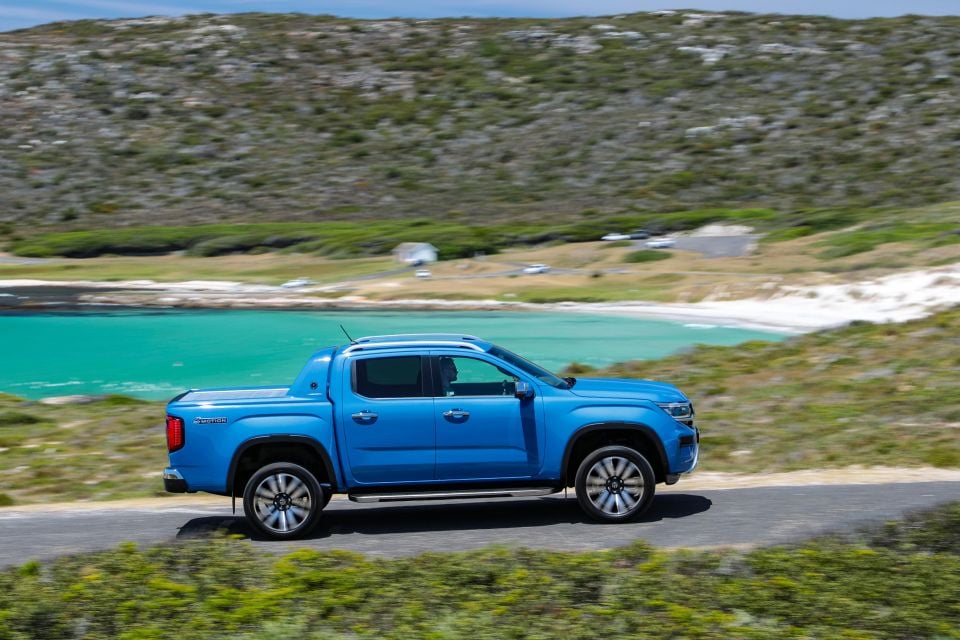
Where expert car reviews meet expert car buying – CarExpert gives you trusted advice, personalised service and real savings on your next new car.
In terms of drive modes, drivers can switch between Normal, Eco (which switches the vehicle to two-wheel drive), Slippery, Mud/Ruts, Snow/Sand and Tow/Haul to tailor the transmission and stability control settings. It’s a welcome feature because it further extends the capability of the driveline beyond just one setting as a catch-all.
We would have liked to see a Sport setting, along with paddle shifters. While some people associate paddle shifters with sportiness and performance driving, they come in handy when towing and driving off-road for moving between gears without taking eyes off the road.
The e-shifter used by Amarok has awkward up/down shift buttons on the side of the shifter that can be hard to use while trying to concentrate on driving.
Additionally, switching between drive modes requires a push of a button beneath the infotainment screen and then an on-screen selection of the drive mode. It can just be a bit fiddly to use while on the move.
After an extensive stretch in the Aventura, we switched over to the PanAmericana. This rides on slightly smaller 20-inch alloy wheels. The softer ride tune is immediately obvious, as is the slightly slower rack.
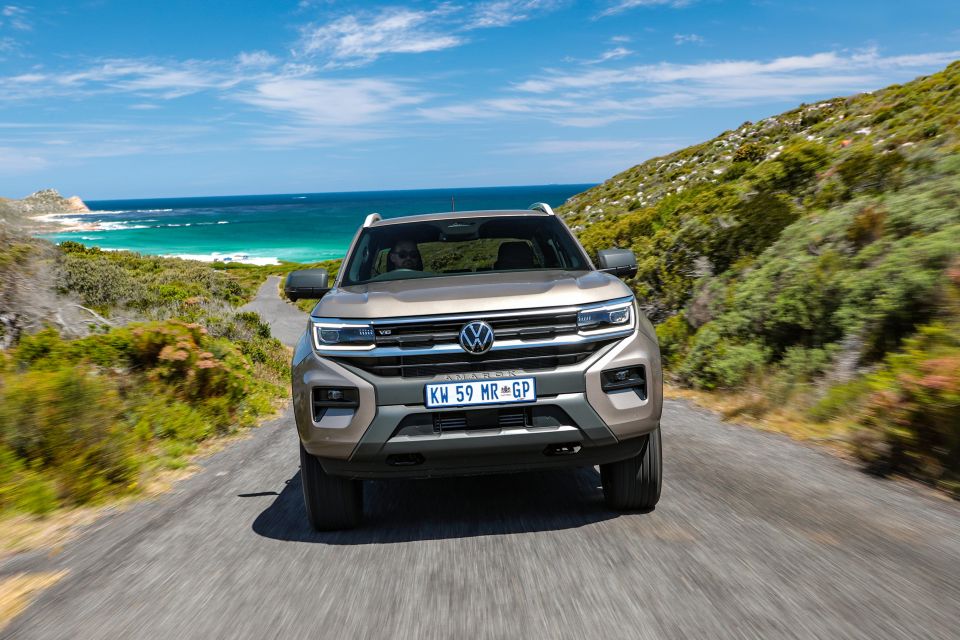
This version felt much more at home on busier sections of road and handled imperfections far better than the Aventura. But, as you can imagine, this compromises cornering performance – while it’s still quite sporty through bends, the tyres limit handling performance somewhat.
But it’s a compromise you’d be willing to make in return for the better ride the rest of the time. Styling wise, the PanAmericana loses the chrome highlights, which suit the more rugged vibe it brings.
Road noise suppression in the Aventura was excellent – the tyres make a big difference on noice levels in the cabin. The only noticeable cabin noise intrusion was wind noise over the wing mirrors, but it wasn’t anything to write home about.
The chunkier tyre on the PanAmericana allowed a little more road noise into the cabin, but ultimately it didn’t intrude enough to be an issue. Like other VW products, the indicator stalk is to the left-hand side of the steering wheel regardless of whether the vehicle is left- or right-hand drive; unlike the Ford Ranger.
It’s also worth pointing out the excellent blind spot monitoring feature that integrates trailer length into its calculations. That means if you are towing with a trailer, the blind spot monitor will light up as a vehicle enters the blind spot zone of the vehicle and trailer – it’s a great safety feature for anybody planning on towing a sizeable load.
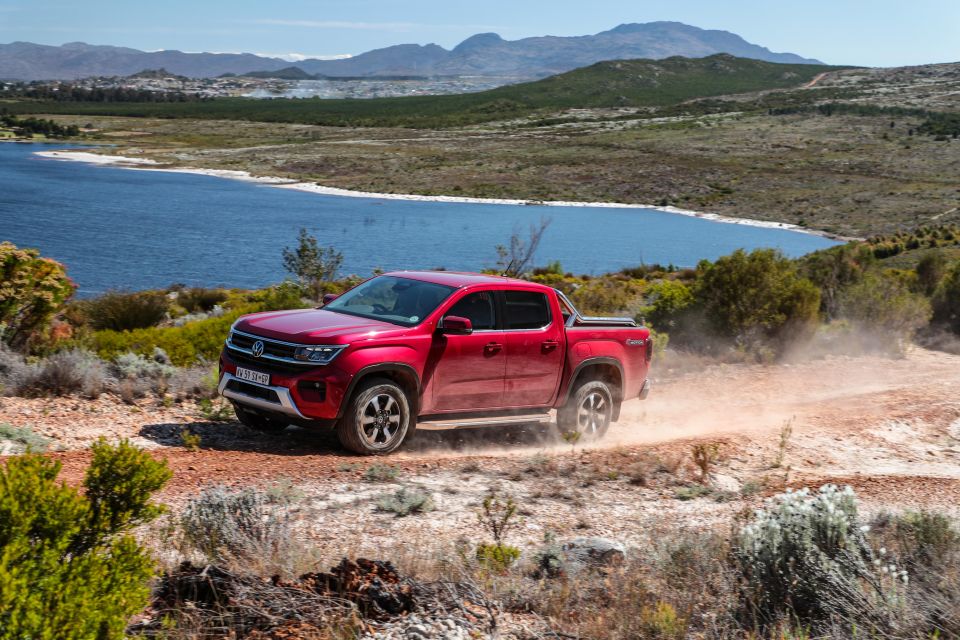
How about off-road performance? Volkswagen set up a light off-road course for us to sample the four-cylinder Style.
The Style rides on smaller 18-inch wheels with all-terrain tyres, and four-cylinder variants have a slightly different driveline configuration to the six-cylinder diesel and four-cylinder petrol.
Four-cylinder diesel models are full-time two-wheel drive, but can be switched to four-wheel drive high range or four-wheel drive low range on unsealed surfaces.
But, just like the six-cylinder diesel and four-cylinder petrol, all variants have a rear differential lock that can be activated in all drive settings.
The four-cylinder diesel sounds louder and less refined than the six, which is to be expected. With just under 240mm of ground clearance, the Style is setup to tackle pretty challenging terrain.

Our off-road course had a few axle-twist zones, along with a couple of ascents and descents to test traction control and the four-wheel drive systems.
We did most of the course in four-wheel drive high range and the more challenging parts with the rear differential locked.
Switching between driveline modes is done using a rotary dial beneath the gear stick. The rear differential lock, traction control and hill descent control buttons are also located in a separate physical button stack adjacent to the driveline selector.
An approach angle of 30 degrees and departure angle of 26 degrees is excellent and means you can clear most terrain without hitting the front or rear on approach and exit.
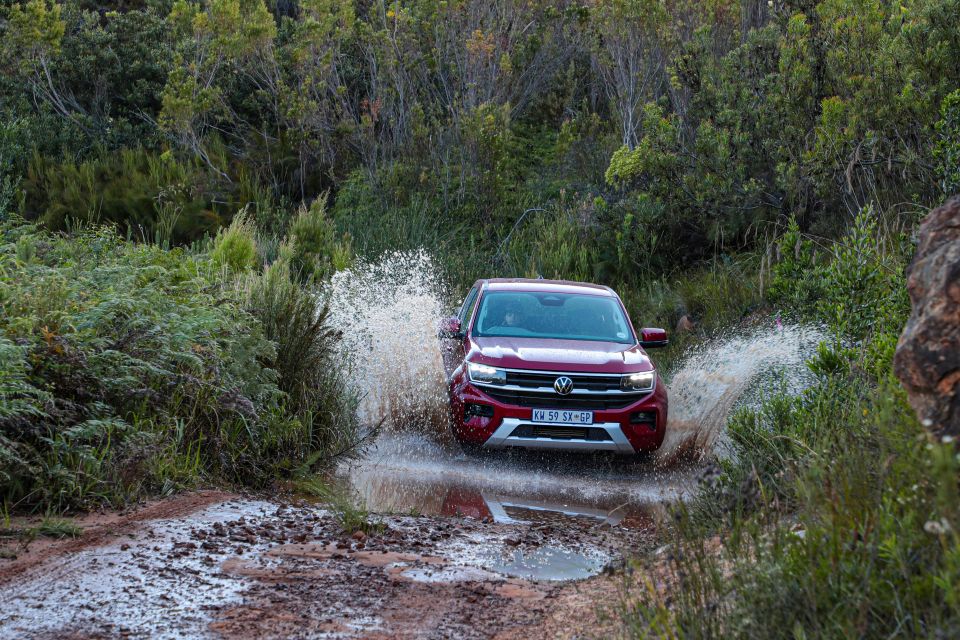
The 800mm wading depth also allows for some pretty serious water crossing before needing to investigate a snorkel or other water ingress mitigation.
When selecting the Mud/Ruts mode, the system takes some sensitivity out of the throttle to smooth out torque delivery and it comes in very helpful when trying to navigate sections of axle twist where part of the car is located within a rut.
The hill descent control is customisable with speeds adjusted using the cruise control switches on the wheel. It works very well and is one of the best in the game in terms of its speed reduction performance and speed variability.
With the rear differential locked it can get out of most situations without too much fuss. The course was pretty light on in terms of difficulty, so we’ll be keen to see how it performs when we get it back in Australia for a proper drive.
If it’s anything like the Ranger (and it’s likely to be), the traction control systems are incredibly well sorted and there are enough controls to cater for both a novice and somebody with more off-road experience.
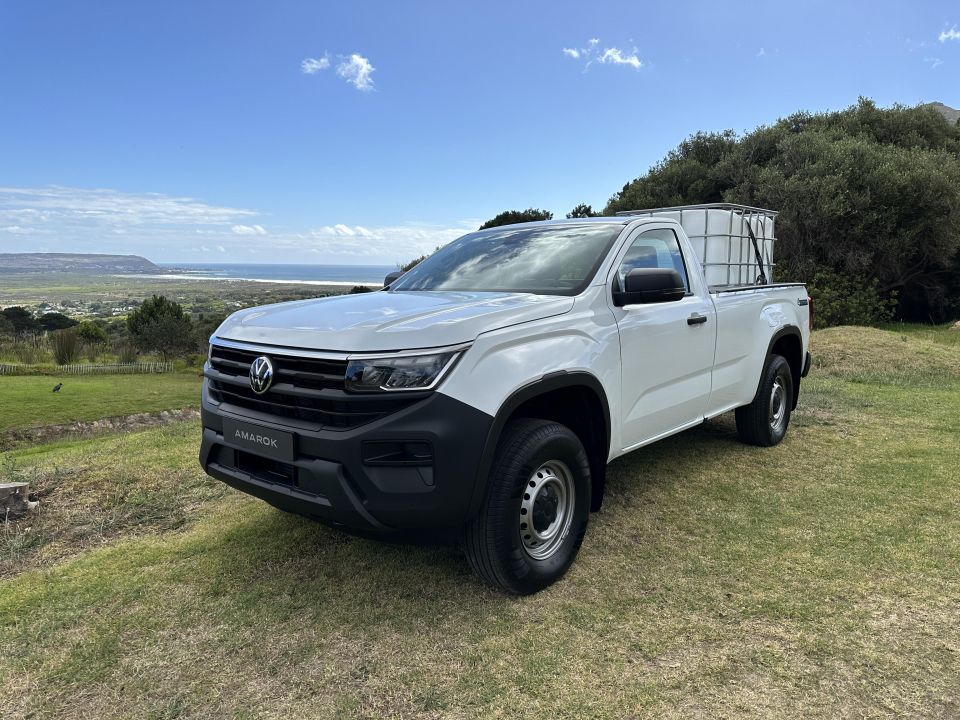
The Amarok will offer five model grades in Australia.
Amarok highlights:

Amarok Life adds:
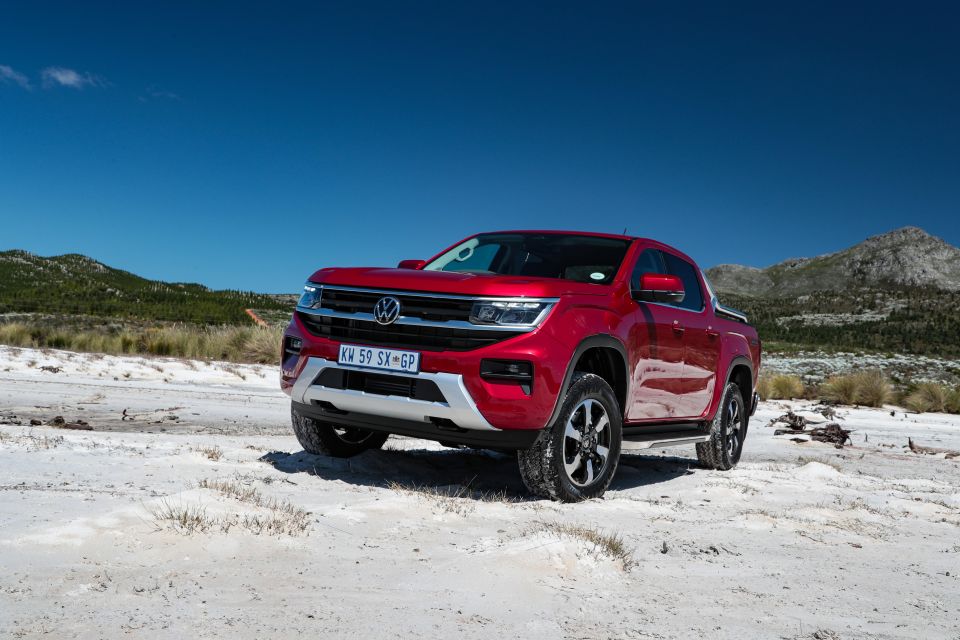
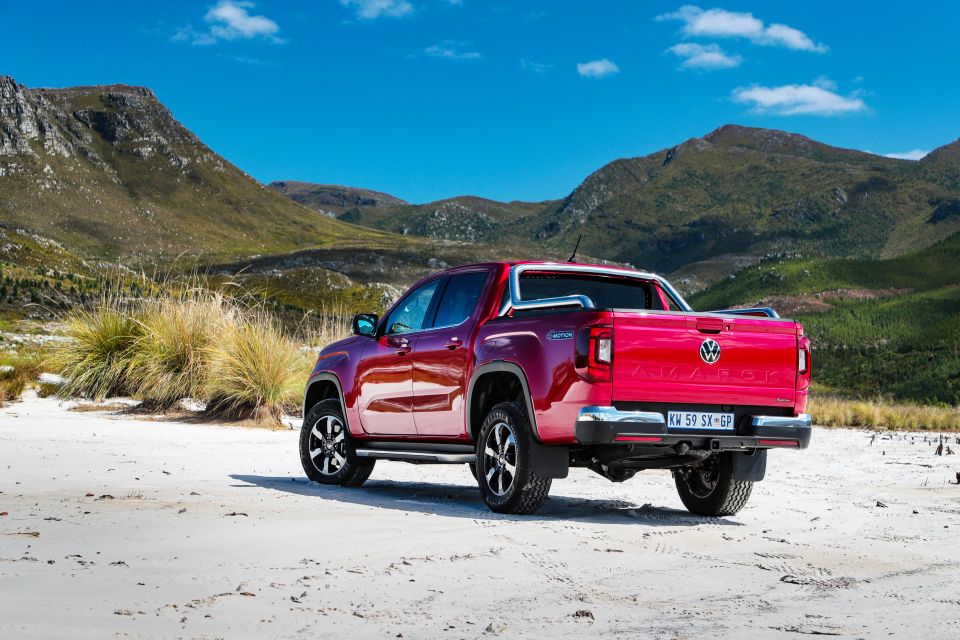
Amarok Style adds:

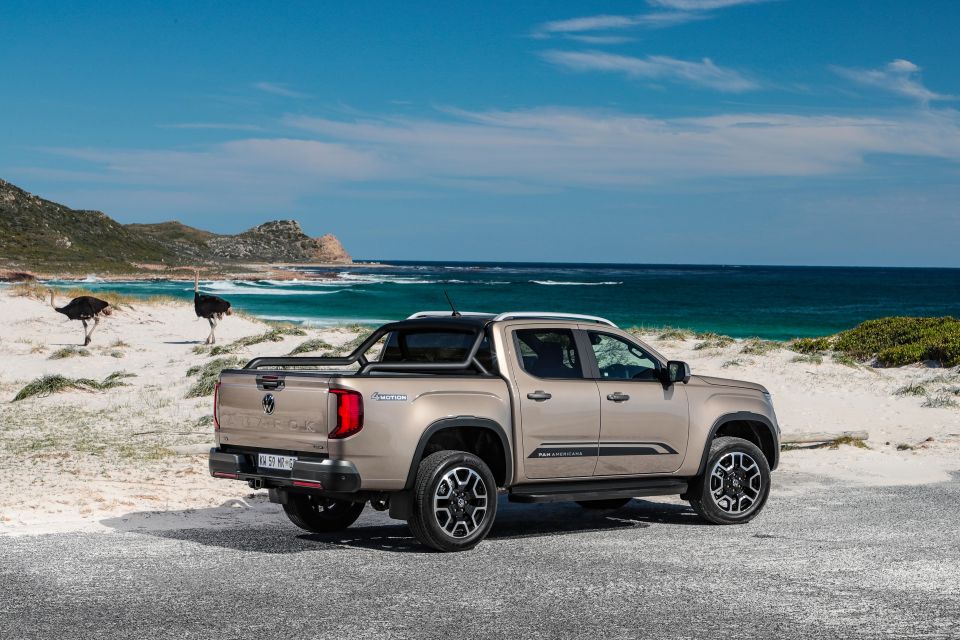
Amarok PanAmericana adds:
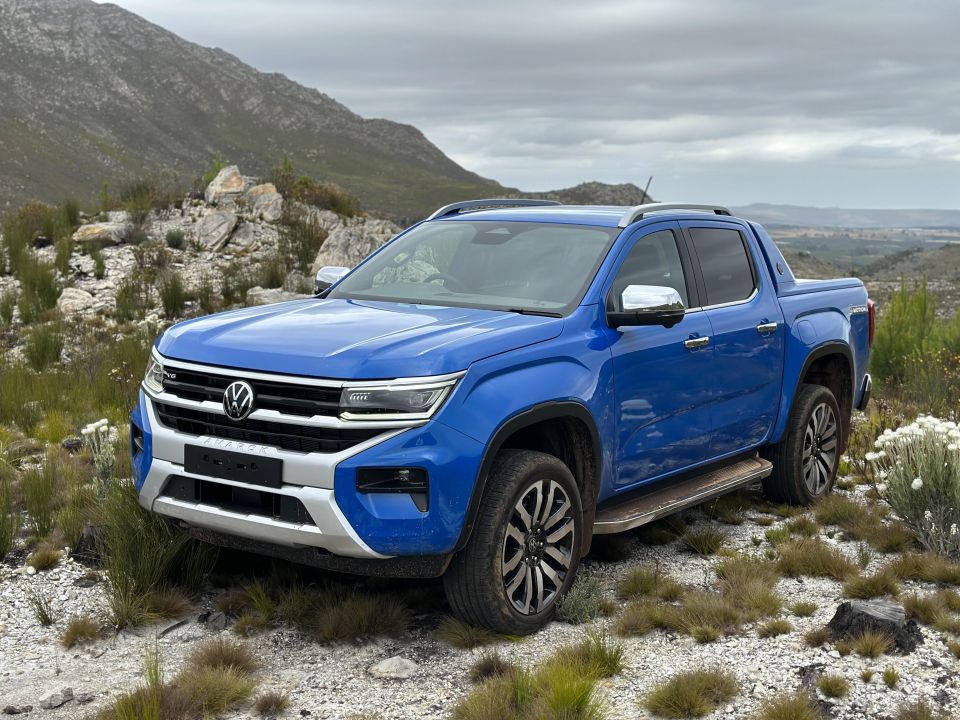

Amarok Aventura gains:
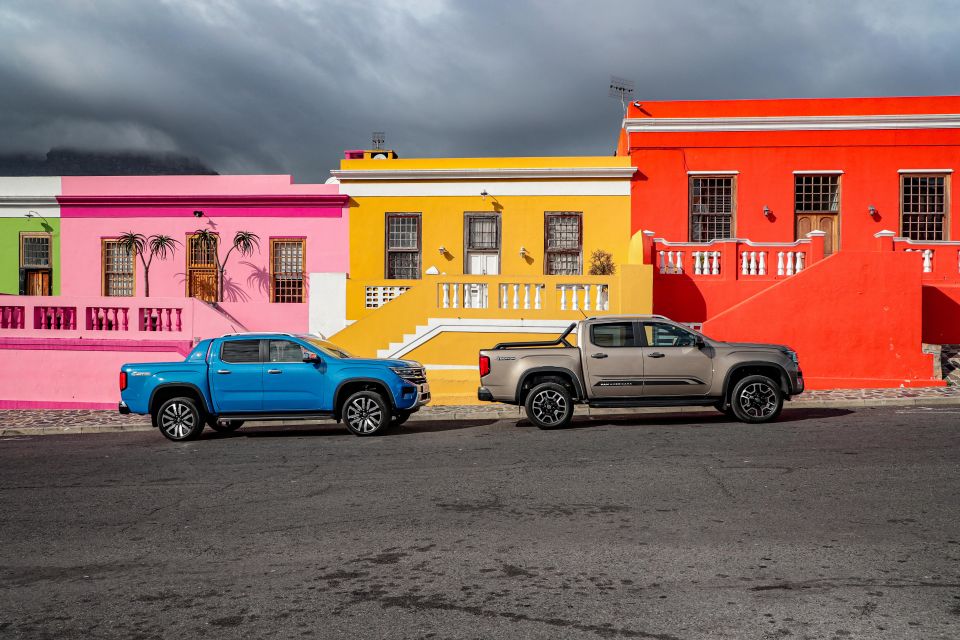
While options and pricing haven’t been confirmed yet, we know the Amarok will be available in eight exterior colours including one colour unique to VW.
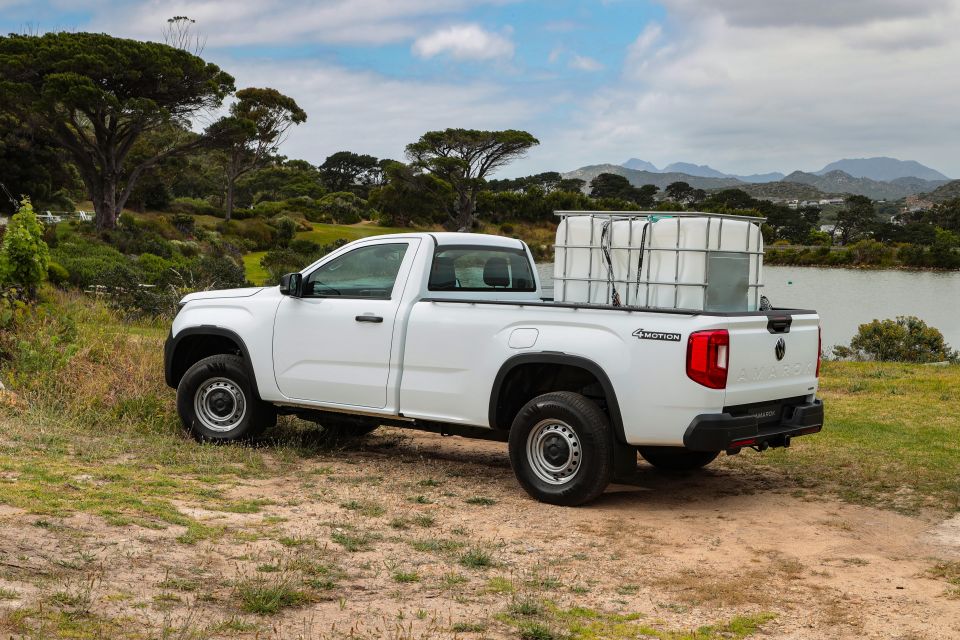
In terms of critical dimensions, Amarok comes in at 5350mm long, 1910mm wide (2208mm including wing mirrors), 3270mm between the axles and a maximum height of 1884mm (up to 2089mm inclusive of aerial).
Off-road dimensions include 237mm maximum ground clearance, an approach angle of 30 degrees, a departure angle of 26 degrees and a ramp angle of 21 degrees. Wading depth is 800mm, while front and rear tracks are 1620mm and 1650mm respectively.
The turning circle is 12.93m and the entire range will tow up to 3500kg with a braked trailer. Data on payloads is a little thing on the ground ahead of the launch, but we understand there is a maximum payload of 1190kg (likely for the entry-level model) and a GCM of 6500kg.
Meanwhile, the Amarok’s tray measures 1625mm long, 1227mm between the wheel arches and 529mm deep.

The all-new Volkswagen Amarok hasn’t been crash tested yet, but given it shares a platform with the Ford Ranger, it’s likely to share the same results.
The Ford Ranger received a five star ANCAP crash rating, with the Amarok coming with the following safety items.
Standard safety features across the range include:
Other safety equipment such as front parking sensors, adaptive cruise control with stop/go, surround-view camera, and fully-autonomous parking assist are available on higher trim levels.
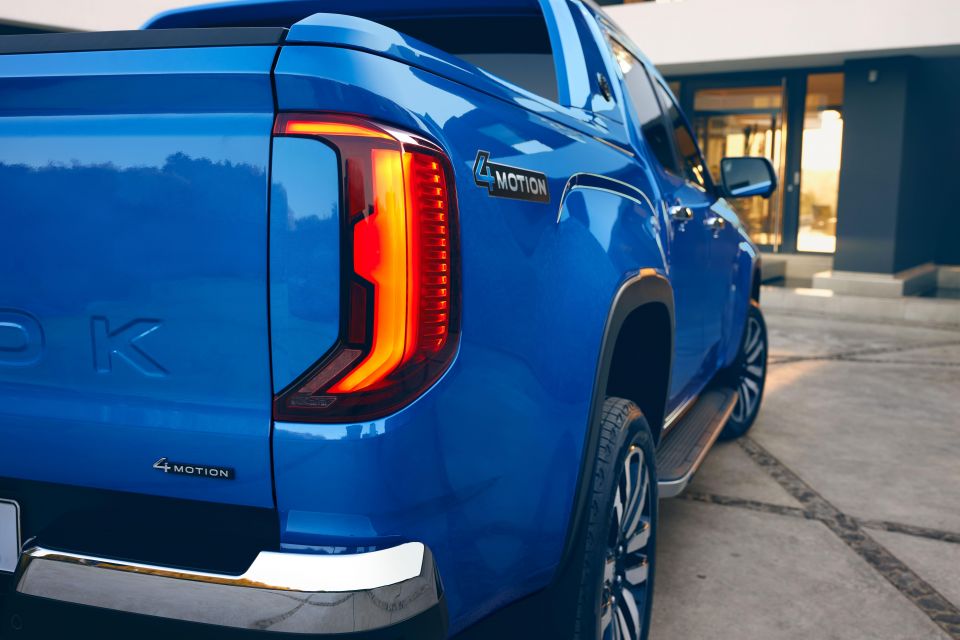
All new Volkswagen vehicles come with a five-year, unlimited-kilometre warranty.
As a reference, the current Amarok has 12-month/20,000km service intervals, though final details for the Australian market are still to be confirmed.
Stay tuned for an update on service intervals and pricing for the new Amarok.
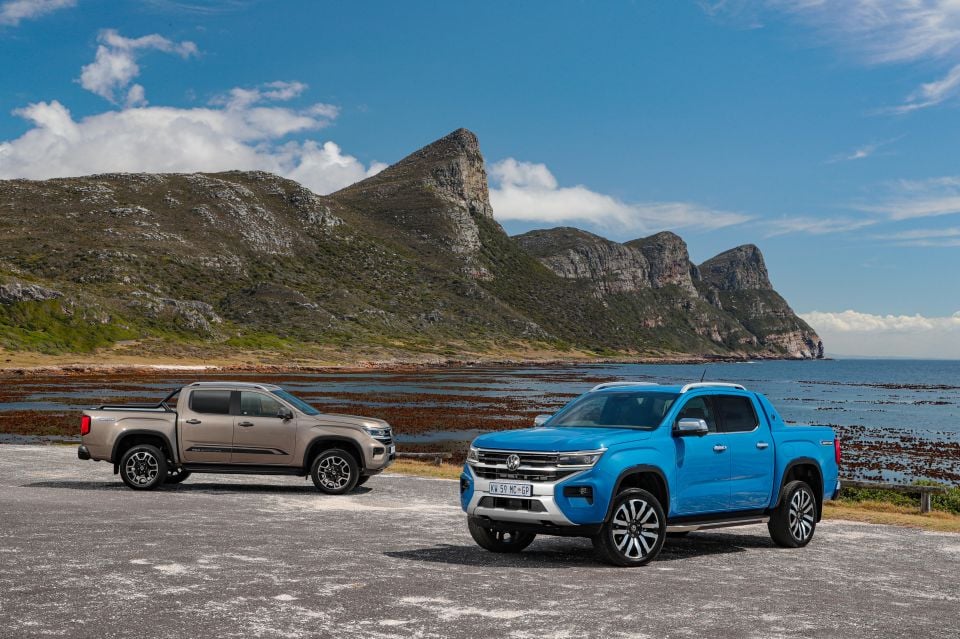
Buy your new car without the stress. It's fast, simple and completely free.

Great service from Travis and team, second time I have used this business would not hesitate to recommend them to anyone
Craig C.
Purchased a Ford Ranger in Sunshine Coast, QLD
CarExpert helped Craig save $7,224 on his Ford Ranger, now let us save you on your next new car.
Get your BEST priceThis was an interesting launch for the wave of Aussie journalists – we’ve had extensive time between the wheel of all the new Ford Ranger, so we came into this having quite a deep understanding of the underlying platform.
And, to be honest, I thought it’d be much the same as the Ranger. But, it’s quite clear that both teams worked together to develop the core ingredients for the product, but then split to tackle the implementation separately.
Volkswagen has a much wider band of driveability and where Ford has leant on comfort and cushiness, Volkswagen has leant far further into sportiness and variability between different models.
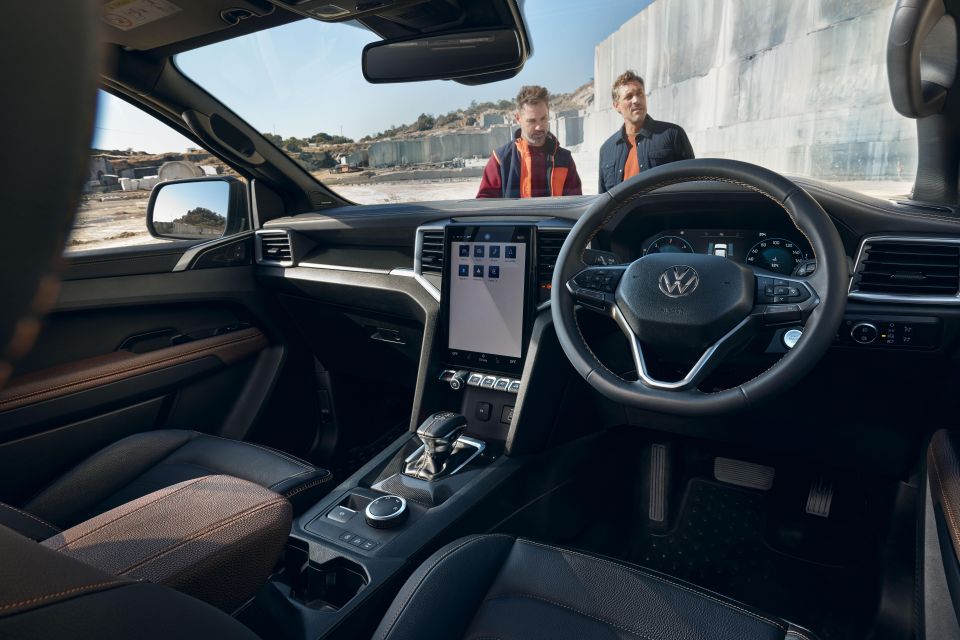
For the driver that wants a sharper ute that can be punted through corners but still do load carrying and towing, it feels like the Amarok is now the head-and-shoulders leader in the segment.
As I mentioned earlier – this test of Amarok didn’t really take into account the type of variable road conditions you’ll find in Australia, so we’ll have to reserve ultimate judgement for when we finally get it back home and have a chance to properly test it.
Early indications are great and if you have put a deposit down, you’re unlikely to be disappointed. It certainly has a unique Volkswagen feel and while it shares a platform with Ranger, it certainly doesn’t feel like just a badge swap.
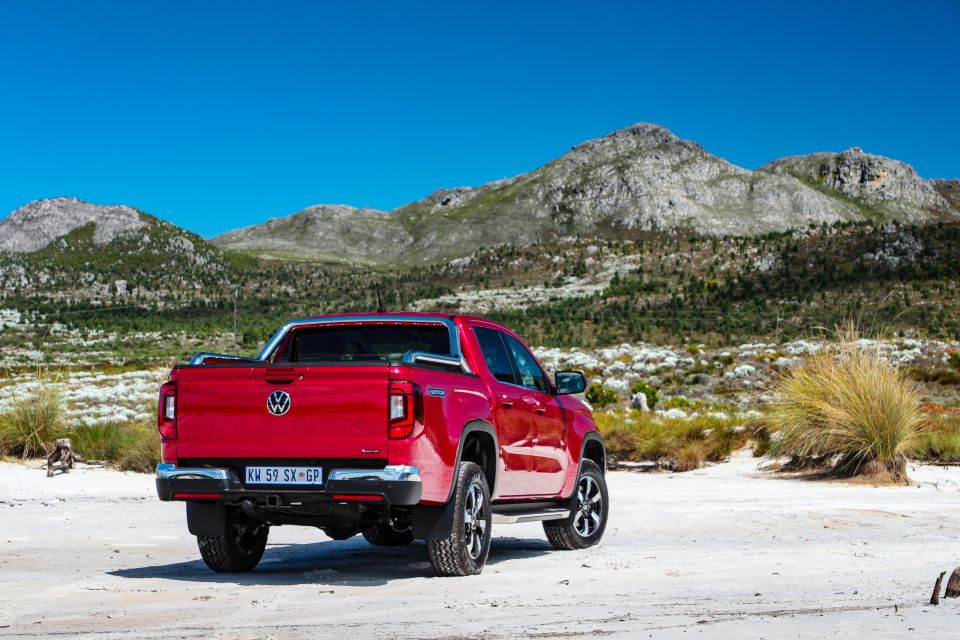
Click the images for the full gallery
Where expert car reviews meet expert car buying – CarExpert gives you trusted advice, personalised service and real savings on your next new car.
Paul Maric is an Australian car expert based in Melbourne, Australia. Paul is a founder of CarExpert.com.au & formerly part of the CarAdvice founding team.


William Stopford
1 Month Ago


Paul Maric
22 Days Ago


Max Davies
17 Days Ago


Josh Nevett
9 Days Ago
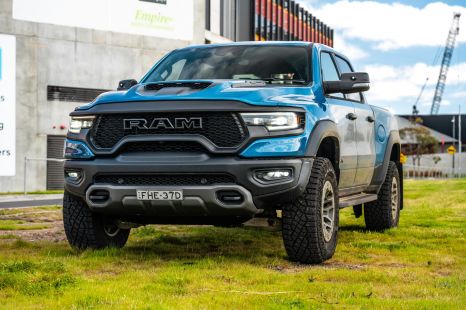

Max Davies
7 Days Ago
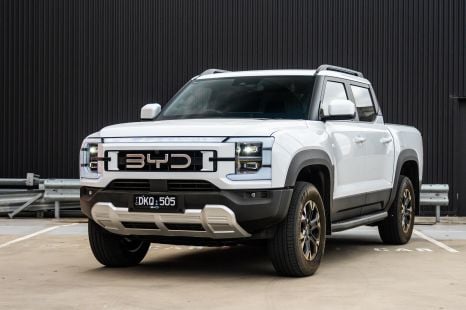

William Stopford
7 Days Ago